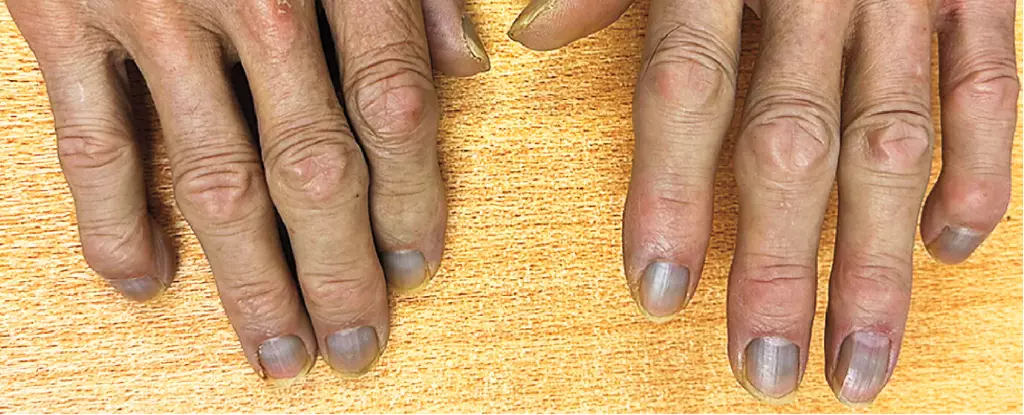In the world of medicine, rare conditions often present challenges that require exhaustive investigation and discerning expertise. A curious incident recently surfaced in a Hong Kong hospital, where an 84-year-old man showcased perplexing symptoms linked to an unusual skin discoloration. This case, while seemingly trivial, offers a glimpse into the complex interplay between environment, medicine, and human health. As clinicians navigated the man’s urinary flow obstruction, they stumbled upon an unexpected diagnosis—argyria, a rare condition traced back to an excessive buildup of silver in the body.
Argyria is characterized by a distinct bluish-gray discoloration of the skin, eyes, and nails, stemming from excessive silver deposits within the body. While the condition itself is uncommon, it is not wholly a medical anomaly. Historically documented cases often include workers in specific industrial trades—such as silver mining and jewelry-making—where exposure to silver dust and compounds was frequent. Less commonly, however, recent cases have begun to arise due to the use of colloidal silver in alternative medicine practices. These treatments claim to offer various health benefits, despite a lack of scientific backing and the U.S. Food and Drug Administration’s warnings against the safety and efficacy of such products.
The patient in this case raised questions regarding the source of his astonishingly high silver levels, particularly as he lacked a clear occupational or environmental exposure that could explain the anomaly. Despite working long hours as a waiter, where the hazards of metal exposure seemed unlikely, the origins of his condition remained elusive. With silver levels recorded at over 40 times the normal concentration for most individuals, the implications became increasingly troubling for a man whose skin had taken on a muted, ashen tone.
To comprehend the severity of this condition, it’s imperative to grasp how silver interacts with the human body. When silver enters the system, whether through occupational exposure, ingestion of contaminated substances, or even through the skin, it travels throughout and often accumulates in various tissues. Over time, especially when exposed to ultraviolent (UV) light, silver ions can undergo a transformation that leads to the characteristic discoloration associated with argyria. In addition to the cosmetic implications, there are potential health ramifications of high silver concentrations within the body, notably regarding the absorption of certain medications.
While argyria’s outward manifestations might lead to social stigma or psychological distress, it’s worth mentioning that the condition itself tends to be benign when faced with long-term health outcomes. Clinicians may not find serious systemic complications arising from silver buildup, besides the possibility of complications with some antibiotics and thyroid medication absorption.
Despite the troubling diagnosis, there is some relief in the fact that the chances of long-term health repercussions are slim, especially given the absence of severe symptoms. Yet the initial puzzlement leads to a broader inquiry into the implications of metal exposure—an increasingly pressing topic for public health discussions. The user’s consistent engagement with potential silver-containing products, notably colloidal silver supplements marketed under the pretense of detoxification or immune support, becomes a focal point for understanding the condition’s emergence.
As the clinical team monitors the patient going forward, their approach underscores the importance of comprehensive knowledge regarding the intake of non-regulated dietary supplements and their potential dangers—an ever-relevant discourse in today’s health-conscious society. The nuances of this case establish both knowledge gaps and essential dialogue between the medical community and public perception of alternative treatments.
The extraordinary case of this 84-year-old man serves as a reminder of the complexities inherent in medical diagnoses and patient histories. While argyria might leave him visibly altered, the real medical mystery revolves around the origins of his silver accumulation. This case may emerge as a catalyst for increased scrutiny regarding colloidal silver use and other unregulated health products. Ultimately, it stresses the value of thorough investigation and evidence-based practices in both clinical and everyday health-related decisions. As we delve deeper into the unknowns of our medical environments, stories like these serve as pivotal case studies for understanding and educating about the risks posed by seemingly innocuous substances in our pursuit of health.


Leave a Reply